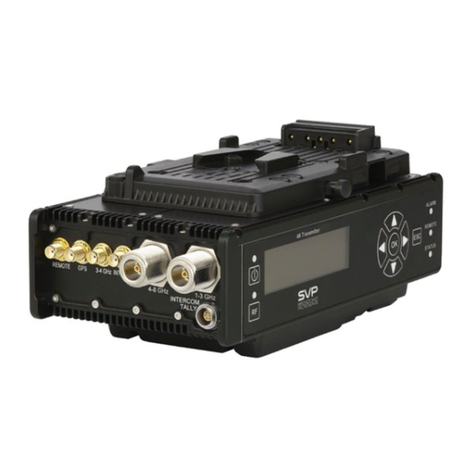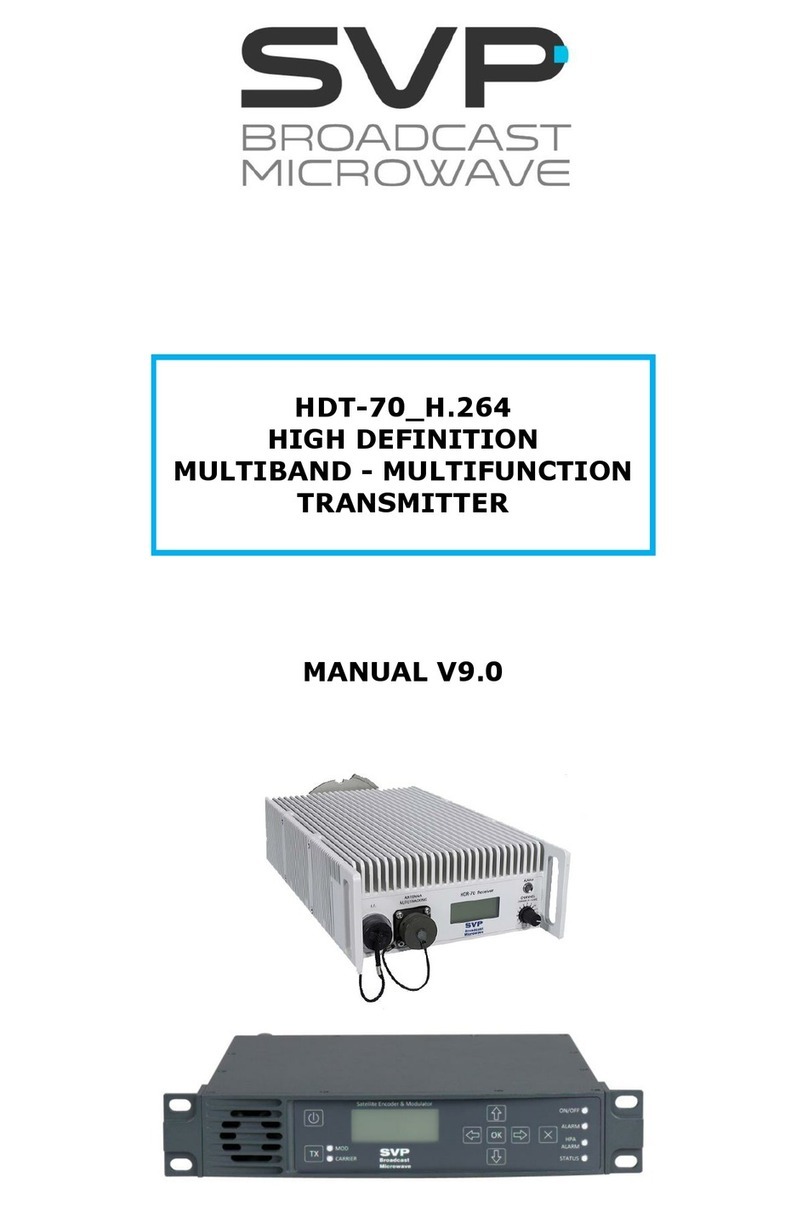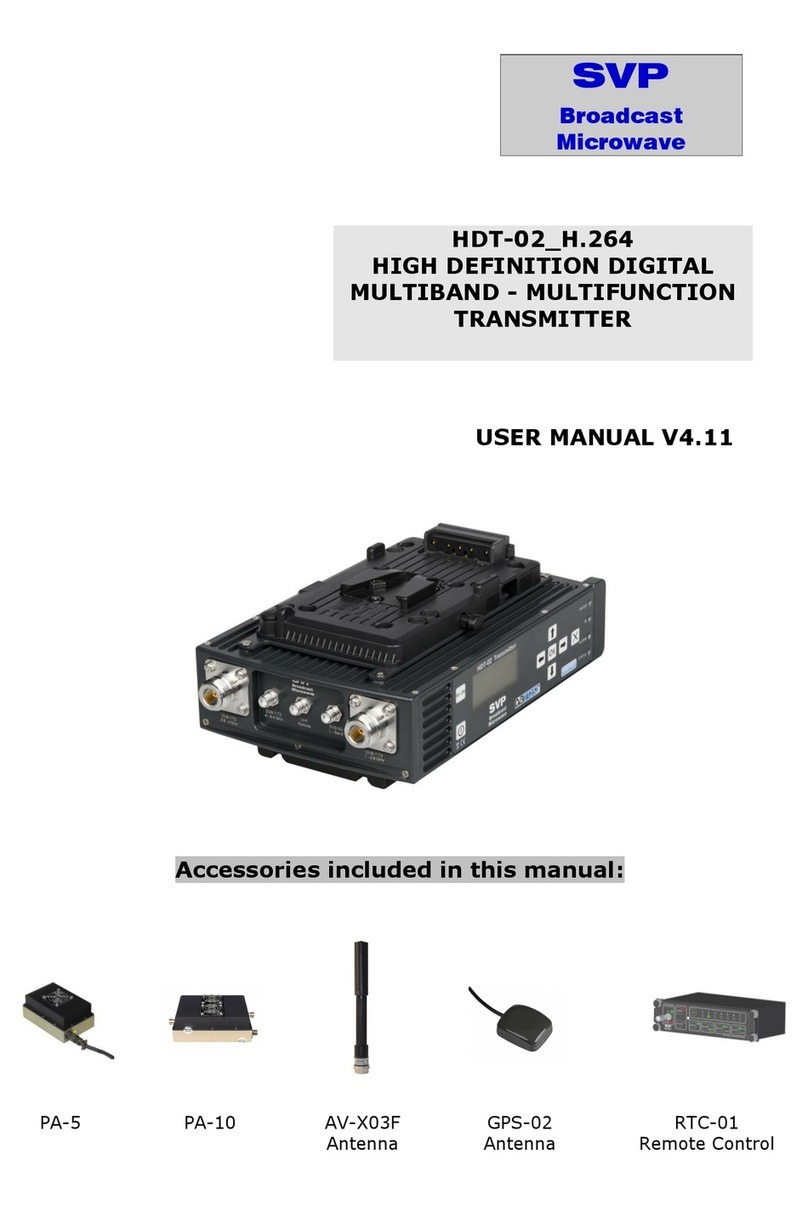Chapter 1: Introduction
User’s Manual: DT-02 Series
1
1Description
The DT-02 digital camera transmitter uses COFDM (Coded Orthogonal
Frequency Division Multiplexing) modulation system (2K mode), which
provides a superior signal robustness and a higher link performance. This
technology provides operators with efficient means to overcome the
challenges of NLOS propagation and mobile channels propagation
OFDM spread spectrum modulation system distributes the data over a large
number of closely-spaced carriers, 1705 carriers in 2K mode. The data are
divided into several parallel data streams, one for each carrier, so, each
carrier transports a lower data rate and the symbol duration is longer. Each
carrier is then modulated with a QPSK, 16QAM or 64QAM scheme.
An OFDM modulated signal, since uses a low symbol rate modulation
scheme (i.e. where the symbols are relatively long compared to the channel
time characteristics) suffer less from intersymbol interference caused by
multipath propagation. As the duration of each symbol is long, it is feasible
to insert a guard interval between the OFDM symbols, thus eliminating the
intersymbol and co-channel interference. So, if one carrier’s information is
lost, it would only be lost a small part of the whole information.
Besides, in OFDM, the sub-carrier frequencies are chosen so that the sub-
carriers are orthogonal to each other, meaning that cross-talk, interference,
between the sub-channels is eliminated. The orthogonality allows high
spectral efficiency.
On the other hand, OFDM system is invariably used in conjunction with
channel coding (forward error correction). The error correction code used in
this equipment is Reed-Solomon coding, which is concatenated with
convolutional coding, and there is and additional interleaving in between the
two layers of coding. Error correcting codes build redundancy into the
transmitted data stream. This redundancy allows bits that are in error or
even missing to be corrected in the receiver.
The reason why this combination of error correction coding is used is that
the Viterbi decoder used for convolutional decoding produces short error
bursts when there is a high concentration of errors, and Reed-Solomon
codes are inherently well-suited to correcting bursts of errors.
The European ETSI EN 300744 standard defines the following convolutional
coding rates: 1/2, 2/3; 3/4; 5/6, 7/8. There is a compromise between the
coding rate (signal robustness) and the transmitted bit rate. If the coding
rate in higher the signal transmission is more robust (1/2 is the most
robust) but the bit rate that the system is capable to transmit is lower.
Used modulation scheme of each OFDM sub-carrier, QPSK, 16QAM and
64QAM, is also connected with signal robustness and transmitted bit rate.
QPSK is the most robust and 64QAM is able to transport a higher bit rate.



































